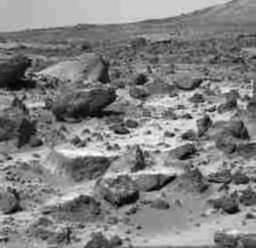This image shows Rocks explored by the Rover.
Click on image for full size
Image from: JPL/NASA
Possible Origins of Rocks explored by the Rover
Unlike Earth where rivers can carry material for hundreds of miles, Martian rivers, which seem to be not very long at all, cannot transport material very long distances.
Because many of the rocks seem to be similar, some scientists guess that the boulders may have been eroded from a big rock 30 kilometers away.
On the other hand, some of the erosion features seen on the rocks may be signs that some of the rock may have been thrown out from the landing of a Big Crater, located 2.2 kilometers to the south of the landing site.
You might also be interested in:
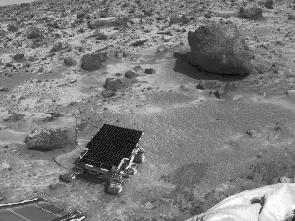
These are the findings of Mars Pathfinder. Rounded Pebbles were found - a result from analysis of the landing site, the rocks, and the soils. there were a variety of rocks deposited by a catastrophic flood
...more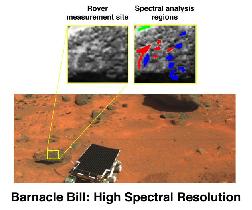
The rocks explored by the Mars Pathfinder's Rover are classified into two groups according to how they eroded. Rocks put in place as a result of an impact which forms a crater are usually much less eroded
...more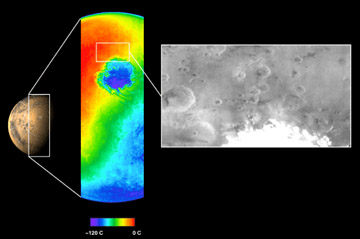
The Mars Odyssey was launched April 7, 2001. After a six-month journey, the Odyssey arrived at Mars on October 24, 2001. The instruments onboard the Mars Odyssey will study the minerals on the surface
...more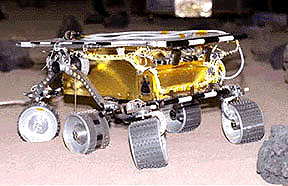
The Mars 2005 mission is still in the planning stages. It is set to launch in the year 2005.
...more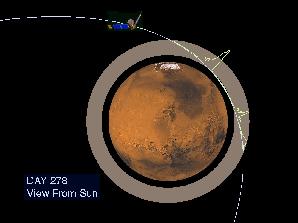
Aerobraking slowed the Mars Global Surveyor down when it reached Mars. Aerobraking also helped MGS to get into the right orbit for mapping the surface of Mars. Aerobraking means that the MGS flew through
...more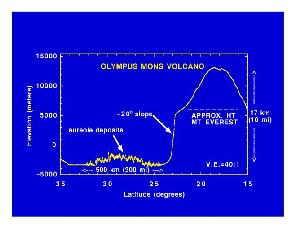
Mars Global Surveyor carries an instrument which measures the heights of things. This instrument is called an altimeter, or "altitude-meter". The graph to the left shows the results returned from Mars
...more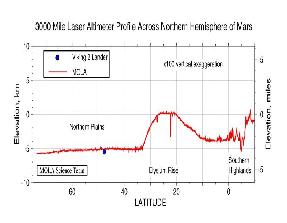
Mars Global Surveyor carries an instrument which measures the heights of things. The picture to the left shows Mars Global Surveyor's measurement of the size of the giant cliff which separates the southern
...more


